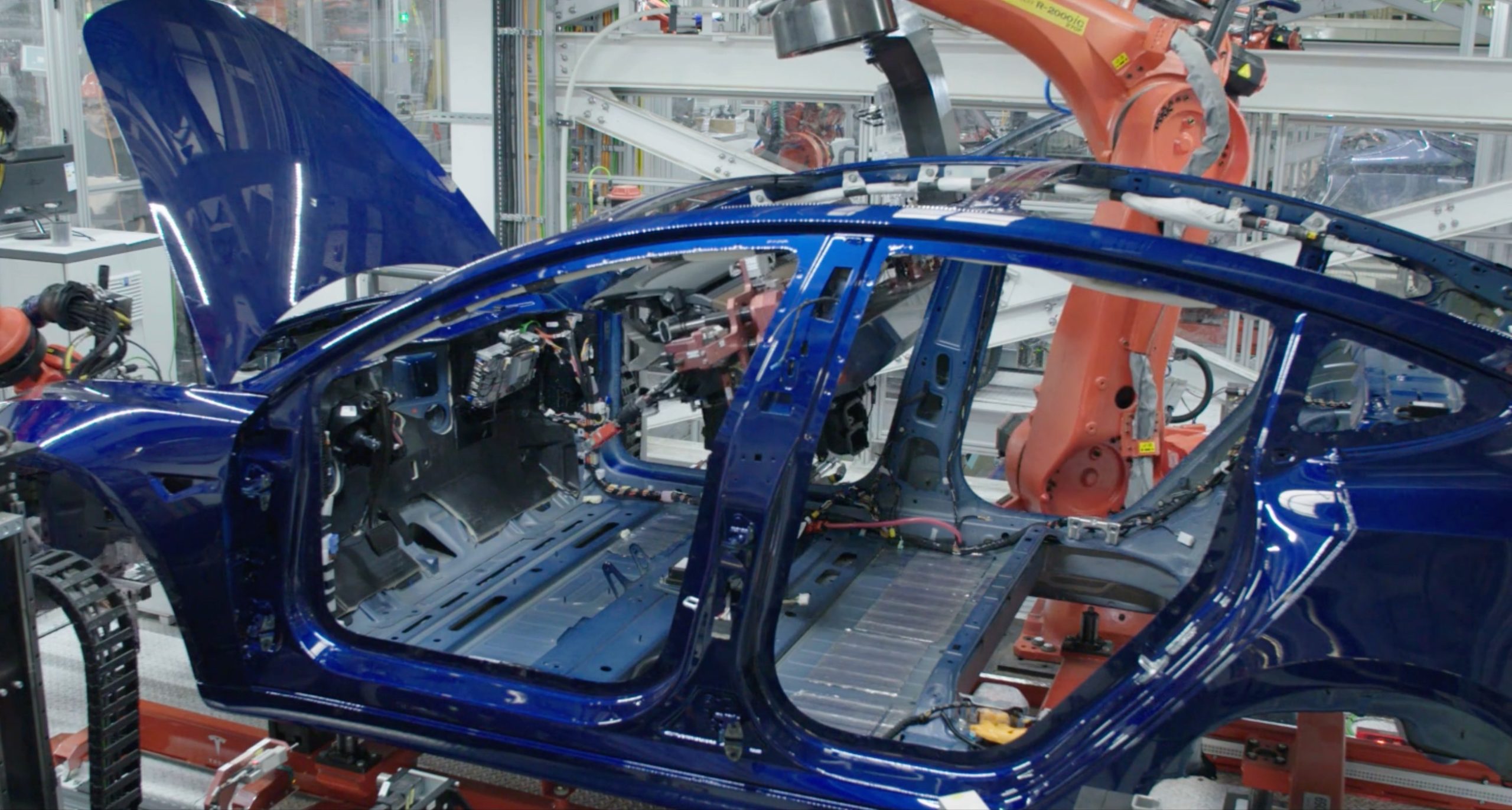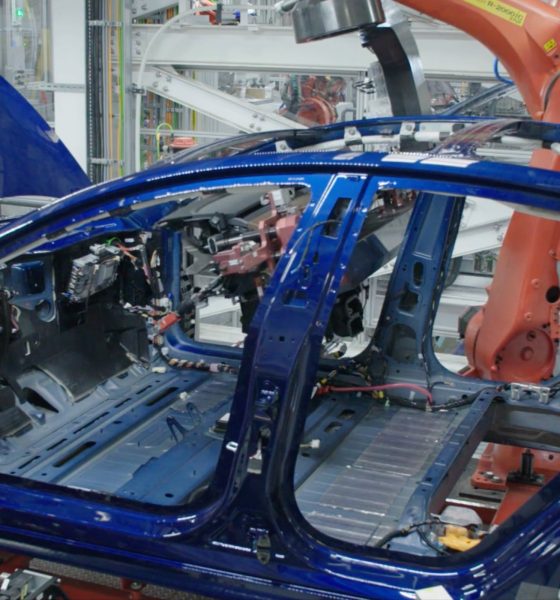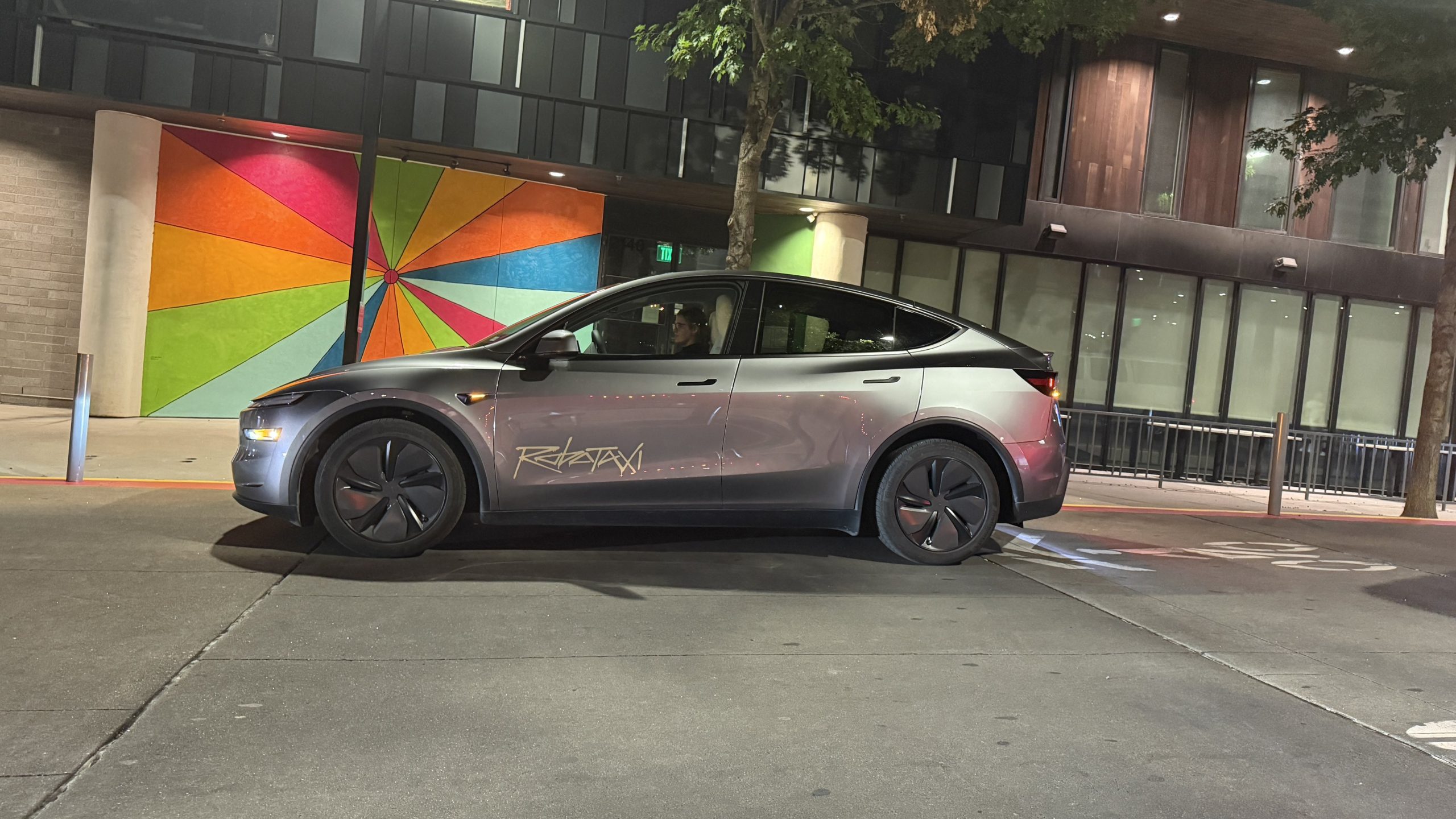

Investor's Corner
Tesla Model 3 delays due to battery module assembly line
Tesla has confirmed that the source of its Model 3 production bottleneck is the battery module assembly line at its $5 billion Gigafactory 1 facility in Sparks, Nevada. The Silicon Valley electric car maker noted in its third quarter 2017 earnings report that the manufacturing process for Model 3’s battery modules – processes that were “done by manufacturing systems suppliers” – were taken over and “significantly redesigned” by Tesla, thus causing the delays.
“To date, our primary production constraint has been in the battery module assembly line at Gigafactory 1, where cells are packaged into modules.” reads the statement from Tesla in its update letter. Furthermore, Tesla says engineering talent at the company have been redirected to fine-tune the automated processes involved with battery module production, noting that these were key elements of which were “done by manufacturing systems suppliers”. This is one of the primary reasons why only 260 Model 3 vehicles have been produced at the end of the third-quarter. Tesla did not provide any guidance on how this will translate into end of year Model 3 production numbers, but did note that throughput is expected to increase substantially in November. The company also noted that Model 3 volume production of 5,000 vehicles per week is expected late in the first quarter of 2018, delayed three months from CEO Elon Musk’s original end of year guidance.
Like the Model S and Model X which uses a low-mount battery pack that’s made up of individual lithium-ion cells that are packed into battery modules, Model 3 utilizes the same design for its skateboard-style battery pack but with fewer modules. Tesla’s mass market-intent vehicle uses a larger 2170 form factor cylindrical cell versus Model S and X that utilize a 18650 lithium-ion cell that resembles a traditional AA battery. Taking a look at a Tesla battery pack teardown video that we shared in the past, we can see that Tesla arranges Model S and X battery cells into 16 modules that are inserted into an aluminum battery case. Model 3 on the other hand utilizes only 4 modules, thereby arranging more battery cells into larger compartments.
Model 3 production constraint is related to the automated processes that’s responsible for manufacturing two of the four Model 3 battery modules. “Four modules are packaged into an aluminum case to form a Model 3 battery pack. The combined complexity of module design and its automated manufacturing process has taken this line longer to ramp than expected. The biggest challenge is that the first two zones of a four zone process, key elements of which were done by manufacturing systems suppliers, had to be taken over and significantly redesigned by Tesla.” said Tesla in its update letter.
Musk added additional color during the Q&A call with analysts following the update letter, citing challenges faced by the programs that operate the robots in Model 3’s battery assembly line. “We had to rewrite all of the software, from scratch. We managed to write 20 to 30 man-years of software in 4 weeks.” said Musk in explaining the level of reprogramming needed on the factory floor.
Both Musk and CTO JB Straubel reasserted that Model 3’s design is vastly less complex than Model S and X, and built with high volume production in mind. “The initial phase of manufacturing in any new vehicle is always challenging, and the Model 3 production ramp is no exception,” said Tesla.
Because the production process for Model 3 is highly automated, any misconfiguration or general issue around a specific machine in the process becomes amplified across all other machines that rely on it. There’s less tolerance for errors in an automated process, explained Musk. Once Tesla fixes many of the mechanical and electrical issues that it’s currently facing, production ramp up will scale exponentially. Conversely, Model S and Model X production was far less automated, which served as a double edged sword: Tesla was able to quickly address issues in the production process by increasing the number of human labor hours involved, but at the expense of reaching a finite production level.
Tesla Model 3 production is expected to reach 5,000 units per week in the first quarter of 2018, but achieving its originally planned 10,000 units produced per week “sometime in 2018” still remains unclear.

Investor's Corner
Tesla analyst maintains $500 PT, says FSD drives better than humans now
The team also met with Tesla leaders for more than an hour to discuss autonomy, chip development, and upcoming deployment plans.

Tesla (NASDAQ:TSLA) received fresh support from Piper Sandler this week after analysts toured the Fremont Factory and tested the company’s latest Full Self-Driving software. The firm reaffirmed its $500 price target, stating that FSD V14 delivered a notably smooth robotaxi demonstration and may already perform at levels comparable to, if not better than, average human drivers.
The team also met with Tesla leaders for more than an hour to discuss autonomy, chip development, and upcoming deployment plans.
Analysts highlight autonomy progress
During more than 75 minutes of focused discussions, analysts reportedly focused on FSD v14’s updates. Piper Sandler’s team pointed to meaningful strides in perception, object handling, and overall ride smoothness during the robotaxi demo.
The visit also included discussions on updates to Tesla’s in-house chip initiatives, its Optimus program, and the growth of the company’s battery storage business. Analysts noted that Tesla continues refining cost structures and capital expenditure expectations, which are key elements in future margin recovery, as noted in a Yahoo Finance report.
Analyst Alexander Potter noted that “we think FSD is a truly impressive product that is (probably) already better at driving than the average American.” This conclusion was strengthened by what he described as a “flawless robotaxi ride to the hotel.”
Street targets diverge on TSLA
While Piper Sandler stands by its $500 target, it is not the highest estimate on the Street. Wedbush, for one, has a $600 per share price target for TSLA stock.
Other institutions have also weighed in on TSLA stock as of late. HSBC reiterated a Reduce rating with a $131 target, citing a gap between earnings fundamentals and the company’s market value. By contrast, TD Cowen maintained a Buy rating and a $509 target, pointing to strong autonomous driving demonstrations in Austin and the pace of software-driven improvements.
Stifel analysts also lifted their price target for Tesla to $508 per share over the company’s ongoing robotaxi and FSD programs.
Investor's Corner
Tesla wins $508 price target from Stifel as Robotaxi rollout gains speed
The firm cited meaningful progress in Tesla’s robotaxi roadmap, ongoing Full Self-Driving enhancements, and the company’s long-term growth initiatives.

Tesla received another round of bullish analyst updates this week, led by Stifel, raising its price target to $508 from $483 while reaffirming a “Buy” rating. The firm cited meaningful progress in Tesla’s robotaxi roadmap, ongoing Full Self-Driving enhancements, and the company’s long-term growth initiatives.
Robotaxi rollout, FSD updates, and new affordable cars
Stifel expects Tesla’s robotaxi fleet to expand into 8–10 major metropolitan areas by the end of 2025, including Austin, where early deployments without safety drivers are targeted before year-end. Additional markets under evaluation include Nevada, Florida, and Arizona, as noted in an Investing.com report. The firm also highlighted strong early performance for FSD Version 14, with upcoming releases adding new “reasoning capabilities” designed to improve complex decision-making using full 360-degree vision.
Tesla has also taken steps to offset the loss of U.S. EV tax credits by launching the Model Y Standard and Model 3 Standard at $39,990 and $36,990, Stifel noted. Both vehicles deliver more than 300 miles of range and are positioned to sustain demand despite shifting incentives. Stifel raised its EBITDA forecasts to $14.9 billion for 2025 and $19.5 billion for 2026, assigning partial valuation weightings to Tesla’s FSD, robotaxi, and Optimus initiatives.
TD Cowen also places an optimistic price target
TD Cowen reiterated its Buy rating with a $509 price target after a research tour of Giga Texas, citing production scale and operational execution as key strengths. The firm posted its optimistic price target following a recent Mobility Bus tour in Austin. The tour included a visit to Giga Texas, which offered fresh insights into the company’s operations and prospects.
Additional analyst movements include Truist Securities maintaining its Hold rating following shareholder approval of Elon Musk’s compensation plan, viewing the vote as reducing leadership uncertainty.
@teslarati Tesla Full Self-Driving yields for pedestrians while human drivers do not…the future is here! #tesla #teslafsd #fullselfdriving ♬ 2 Little 2 Late – Levi & Mario
Investor's Corner
Tesla receives major institutional boost with Nomura’s rising stake
The move makes Tesla Nomura’s 10th-largest holding at about 1% of its entire portfolio.

Tesla (NASDAQ:TSLA) has gained fresh institutional support, with Nomura Asset Management expanding its position in the automaker.
Nomura boosted its Tesla holdings by 4.2%, adding 47,674 shares and bringing its total position to more than 1.17 million shares valued at roughly $373.6 million. The move makes Tesla Nomura’s 10th-largest holding at about 1% of its entire portfolio.
Institutional investors and TSLA
Nomura’s filing was released alongside several other fund updates. Brighton Jones LLC boosted its holdings by 11.8%, as noted in a MarketBeat report, and Revolve Wealth Partners lifted its TSLA position by 21.2%. Bison Wealth increased its Tesla stake by 52.2%, AMG National Trust Bank increased its position in shares of Tesla by 11.8%, and FAS Wealth Partners increased its TSLA holdings by 22.1%. About 66% of all outstanding Tesla shares are now owned by institutional investors.
The buying comes shortly after Tesla reported better-than-expected quarterly earnings, posting $0.50 per share compared with the $0.48 consensus. Revenue reached $28.10 billion, topping Wall Street’s $24.98 billion estimate. Despite the earnings beat, Tesla continues to trade at a steep premium relative to peers, with a market cap hovering around $1.34 trillion and a price-to-earnings ratio near 270.
Recent insider sales
Some Tesla insiders have sold stock as of late. CFO Vaibhav Taneja sold 2,606 shares in early September for just over $918,000, reducing his personal stake by about 21%. Director James R. Murdoch executed a far larger sale, offloading 120,000 shares for roughly $42 million and trimming his holdings by nearly 15%. Over the past three months, Tesla insiders have collectively sold 202,606 shares valued at approximately $75.6 million, as per SEC disclosures.
Tesla is currently entering its next phase of growth, and if it is successful, it could very well become the world’s most valuable company as a result. The company has several high-profile projects expected to be rolled out in the coming years, including Optimus, the humanoid robot, and the Cybercab, an autonomous two-seater with the potential to change the face of roads across the globe.
@teslarati Tesla Full Self-Driving yields for pedestrians while human drivers do not…the future is here! #tesla #teslafsd #fullselfdriving ♬ 2 Little 2 Late – Levi & Mario








